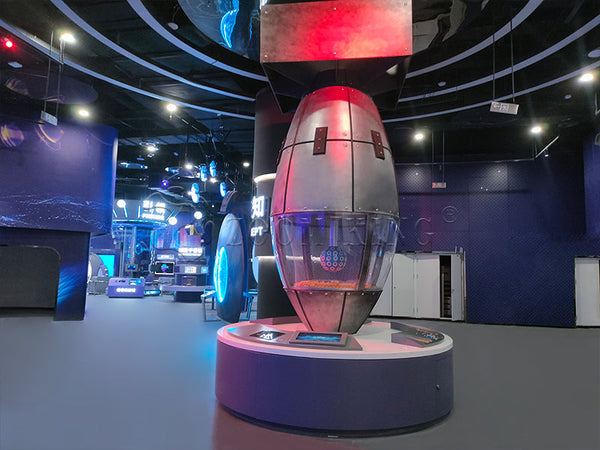Nuclear Fission Unleashed: Exploring Atomic Power Through an Immersive Interactive Exhibit

Introduction
Welcome to the frontier of science education—an interactive quantum technology exhibit where physics meets hands-on design. At the heart of this engaging installation are ten glowing light balls, each representing a fundamental concept in quantum physics. Designed for children, teens, and science enthusiasts, this exhibit simplifies complex ideas like superposition, entanglement, and quantum tunneling through motion, light, and interaction. It’s a stunning example of how science museums are making quantum technology both accessible and unforgettable.
What Is Quantum Technology?
Quantum technology is based on the principles of quantum mechanics—the rules that govern particles at the smallest scales. While quantum theory might seem intimidating, this exhibit breaks it down into tangible, interactive elements that let visitors see, touch, and play with quantum concepts in real time.
How the Exhibit Works: The Ten Quantum Light Balls
At the center of the exhibit is a beautifully designed tabletop or freestanding display. Ten translucent spheres glow in different colors, each one linked to a sensor, motion control, or logic system that responds to touch or proximity. Here’s how each sphere represents a quantum idea:
Superposition Ball – Glows in two colors at once; users choose one, simulating wavefunction collapse.
Entanglement Pair – Touching one ball causes another across the table to light up simultaneously.
Quantum Tunneling – A ball "jumps" between two locations via magnetic track, visualizing barrier penetration.
Quantum Spin – A spinning base allows users to observe clockwise/counterclockwise behavior with LED indicators.
Heisenberg’s Uncertainty – Ball flickers unpredictably when position and velocity are both measured.
Quantum Decoherence – Once "measured," the glowing pattern stabilizes, losing its quantum state.
Qubit Encoding – Users can toggle the ball through various light patterns, mimicking 0, 1, and superposed states.
Photon Interaction – Responds to hand shadows and triggers changes in light phase/color.
Quantum Randomness – A light show controlled by a quantum-random number generator.
Quantum Computing Node – Linked to a central processor, demonstrating how qubits interact logically.
This immersive approach offers a learning-through-play model that helps children understand one of the most cutting-edge fields in physics.
Why This Exhibit Captivates Visitors
Visually Stunning: The glowing spheres are aesthetically designed to catch the eye and spark curiosity.
Hands-On Physics: Each ball offers tactile or proximity-based feedback, perfect for interactive learning.
Educational Value: Explains complex ideas through analogy and cause-effect interaction.
STEM-Aligned: Supports core themes in science education—data, energy, probability, systems, and information.
Ideal for Families and Schools: Makes abstract science topics tangible and conversation-friendly.
Designed for the Future of Learning
This quantum exhibit represents a new generation of interactive science education. Designed with both engineering precision and educational storytelling, the glowing light balls don’t just teach—they inspire. As museums and learning centers shift toward more immersive STEM experiences, this exhibit proves how quantum mechanics can be made visual, playful, and deeply engaging.
Conclusion
The Quantum Light Ball Exhibit is more than a physics display—it's a gateway to the future. By translating abstract quantum phenomena into hands-on, glowing, interactive objects, the exhibit invites learners of all ages to see quantum physics in action. Whether you're a curious child, a student, or an educator, this installation offers a one-of-a-kind experience that brings the invisible world of quantum technology to light.
